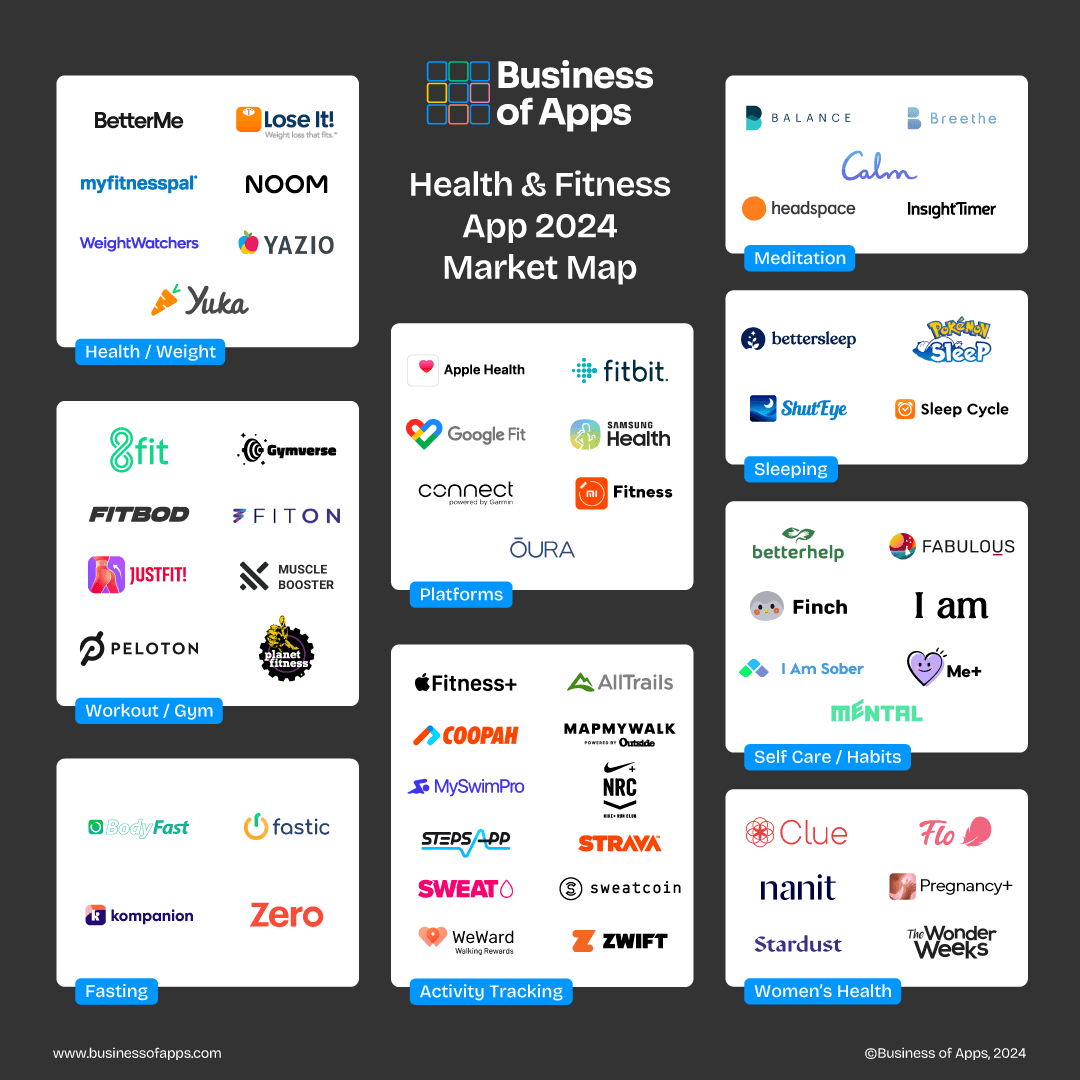
The Health & Fitness App Market Map 2024 is now live and available to download. This infographic categorizes the health and fitness app sector into distinct subsectors and identifies the key players in each subsector.
With over 600 million users and $4.4 billion revenue, the health and fitness app sector is a popular category with lots of room for growth. While it has seen a slight downturn since the pandemic, many of the health and fitness habits picked up during that time have remained a part of people’s lives.
Quite a lot of the key apps in this sector are still startups and independent, such as Strava, AllTrails, Flo and Oura. It is also a low-cost app sector, as indicated by development houses such as Leap Fitness and Enerjoy operating several dozen popular health and fitness apps.
At the same time, plenty of users are accessing single feature apps instead of using a platform to track everything, as shown by the popularity of apps like MySwimPro, Yazio, and Sleep Cycle. This makes potential consolidation of the market into a few platform apps unlikely, as users are looking for targeted services.
The sector can be broken down into three main pillars: health, fitness and wellness. It can then be broken down further, for example fitness into activity tracking and workouts, health into calorie counters and fasting, and wellness into meditation and sleeping.
- Platforms: All-in-one tools like Apple Health, Google Fit, and Samsung Health track metrics via connected devices. Apps like Fitbit and Oura integrate with wearables for more targeted insights.
- Activity Tracking: Apps such as Strava, AllTrails, and Nike Run Club foster fitness through tracking and social engagement. Personalized training plans are offered by Apple Fitness+, Coopah, and MySwimPro. Reward-based exercise apps like Sweatcoin and WeWard sustain motivation.
- Health and Weight: Apps like MyFitnessPal, Lose It!, and Yazio help track calories, while guided programs like Noom, WeightWatchers, and BetterMe combine check-ins and fitness routines.
- Fasting: Apps like Fastic and Zero support intermittent fasting by tracking schedules and rewarding consistency.
- Workout and Gym: Home workout apps like 8fit, FitOn, and JustFit offer plans without equipment. Muscle Booster, Gymverse, and Fitbod provide gym-based routines.
- Women’s Health: Tools like Flo and Clue focus on period and pregnancy tracking. Apps such as Nanit and Wonder Weeks provide insights for baby care.
- Meditation: Wellness leaders Calm and Headspace offer guided meditations, music, and sleep aids to reduce stress and improve well-being.
- Sleeping: Apps like Sleep Cycle and ShutEye analyze sleep patterns and offer strategies to improve sleep quality.
- Self-Care and Habits: Self-care apps include Finch, Fabulous, and Me+ for habit planning, while Mental combines fitness and therapy for holistic wellness.
To download the Health & Fitness App Market Map 2024 as a PDF check out the link.

















